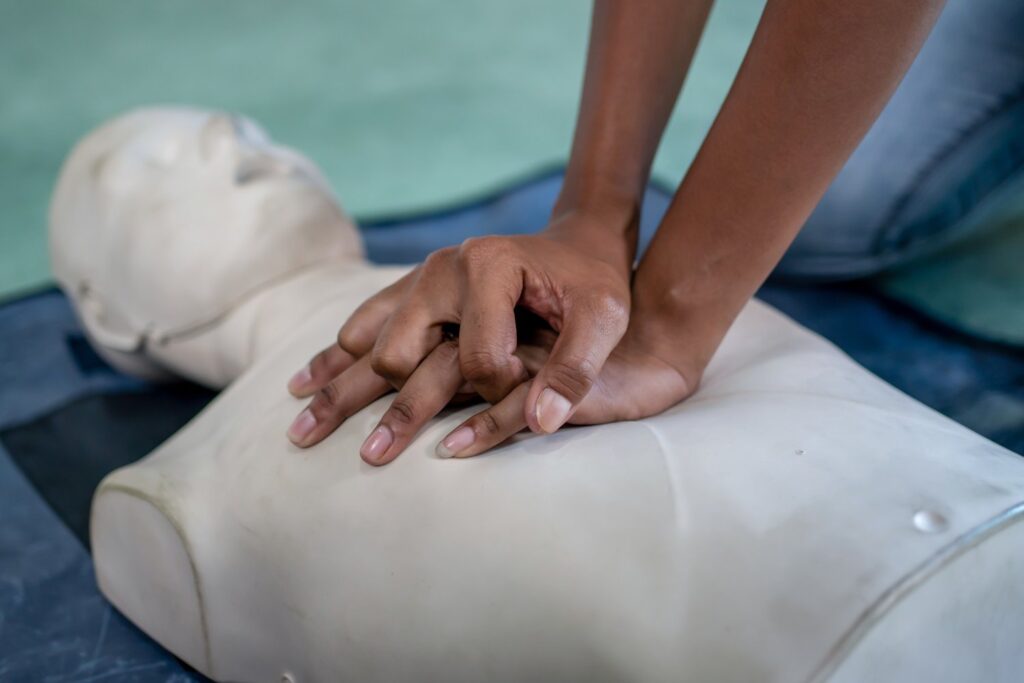Getting yourself trained in cardiopulmonary resuscitation (CPR) could prove to be lifesaving for someone else. New research shows that bystander CPR can substantially improve a person’s odds of surviving a cardiac arrest.
CPR is a valuable stopgap intervention for cardiac arrest, which is when someone’s heart stops beating. But the scientists behind this new research wanted to better quantify how the timing of a bystander providing CPR before trained medical help arrives can affect a person’s prognosis compared to no bystander CPR at all. They found that bystanders could save people’s lives and protect their brain health with CPR even up to ten minutes after a cardiac arrest. The results highlight the importance of encouraging everyday people to perform CPR despite the known risks, the researchers say.
The researchers analyzed data from the national Cardiac Arrest Registry to Enhance Survival, or CARES, looking specifically at nearly 200,000 documented cardiac arrest cases that occurred outside of a hospital between 2013 and 2022. The researchers found that bystander CPR was consistently associated with improved outcomes relative to no bystander CPR at all. But they also found diminishing returns the longer it took for CPR to start.
Someone given CPR in the first two minutes after their arrest was 81% more likely to survive and 95% more likely to not experience significant brain damage compared to no CPR, for instance. Even CPR given up to ten minutes later wasn’t meaningless, though—these victims were still 19% more likely to live and 22% more likely to avoid brain damage than those given no bystander CPR at all. The researchers’ findings are set to be presented this week at the American Health Association’s annual Resuscitation Science Symposium.
“Our findings reinforce that every second counts when starting bystander CPR and even a few minutes delay can make a big difference,” said lead researcher Evan O’Keefe, a cardiovascular fellow at Saint Luke’s Mid America Heart Institute and the University of Missouri-Kansas City, in a statement from the American Heart Association.
CPR isn’t a risk-free intervention. Even if done properly, the chest compressions used in CPR can cause serious complications like broken ribs or damaged internal organs. These risks increase in people who are elderly and/or have other chronic diseases, and these groups are also less likely to survive cardiac arrest without major health issues even when they receive CPR at a hospital. That suggests that CPR may not be always recommended for people in already fragile health.
That said, studies have found that even older people have a greater likelihood of long-term survival when given bystander CPR. And organizations like the American Heart Association continue to endorse bystander CPR, stating that its benefits clearly outweigh the risks. More than 350,000 cardiac arrests outside of the hospital are estimated to occur in the U.S. annually, with about 9% of victims surviving. According to the AHA, CPR performed immediately could double or triple someone’s chances of survival. Currently, however, bystander CPR is only provided in about 35% to 40% of these cases globally.
Given their findings, the authors say that CPR training should be more widely provided to the public, while bystanders should be more encouraged to perform CPR and other first aid in emergency situations.
“It suggests that we need to focus on teaching more people how to perform CPR, and we also need to emphasize ways to get help to those suffering cardiac arrest faster,” O’Keefe said. “This might include more widespread CPR training programs, as well as better public access to automated external defibrillators (AEDs) and improved dispatch systems.”


